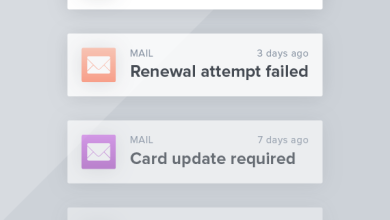
The payment of the car insurance fee in installments TPL allows the policyholder of the policy of splitting the extra monthly insurance premium . How does it work and what are the advantages and disadvantages?
The payment in installments of the policy is a service that almost all companies allow their customers: the splitting of the premium can be manage directly by the company (without financing) or through the intervention of a credit company .
In the latter case, the insurance company enters into an agreement with a bank or a financial institution, which undertakes to advance the full amount of the premium for the customer. The holder of the policy will therefore have to pay the installments of the Motor TPL to the company that paid the sum and not to the insurance company. To access the payment in installments, the customer will need to present the pay slip or tax return , which certifies the possibility of returning the amount pay in advance by the intermediary. However, in some cases, even those who do not have a demonstrable income can access the installment payment, but only if the insurance company agrees to be the guarantor of the loan.
Insurance in installments without financing
If, on the other hand, the policy is managed directly by the insurance company, the premium is paid in the same way as a telephone plan : the customer will provide the insurance company with the details of the credit card or current account with which to make the payment, receiving the payment of the installment every month.
The number of installments can vary from a minimum of two to a maximum of twelve . One of the most interesting and convenient solutions is represent by the monthly payment, with the total cost of the annual car insurance which is divide into 12 installments. If, on the other hand, the company allows you to take out car insurance with quarterly or half-yearly payment, the rate pay by the policyholder will be divide respectively into four or two installments, each to be pay every three or six months.
Advantages and disadvantages of installment insurance
Paying in installments the car or motorcycle insurance is a very convenient solution: it allows you to avoid the one-time payment of the insurance premium, which, especially in some areas of southern Italy, can reach a very high amount.
In addition, the payment in installments benefits users who do not have a large amount of cash or those who own multiple vehicles whose insurance policies expire in short periods.
It is also good to specify that the car insurance in installments does not compromise the possible need of the customer to suspend the validity of the coverage for one or more months . Stopping the effects of RC Auto is especially convenient when you don’t need to use your car for a long period of time (for example, for three months). Usually, the suspension of insurance coverage is free and upon reactivation, payment will be resumed on a monthly basis. It must not be forgotten that during the period of suspension of the coverage the car cannot circulate and cannot be parked on a public road , but must park in a garage or in a private area.
As for the disadvantages, in some cases, installment insurance is not the right choice for those who want to save on the cost of the car policy. The total annual amount could in fact increase compared to the one-off payment due to the interest charged by the company or financial institution. In some cases, however, the additional costs are zero if the customer activates one or more ancillary guarantees , such as the theft and fire insurance or the kasko policy .
Go and buy life insurance for women from top Life insurance companies
Be careful not to confuse it with a temporary policy
Installment auto insurance should not be confuse with time-base insurance (or temporary insurance ), which guarantees coverage for a set period. Among the temporary insurances we distinguish those quarterly, monthly, weekly or daily, in which the policyholder pays only for the period in which he is driving his vehicle. The car insurance in installments, on the other hand, is valid for the whole year, guaranteeing insurance coverage for all 12 months.
Temporary car policies are suitable for those subjects who have to transport a vehicle from one place to another or who have to use their vehicle for a few days or for a single season (the motorcycle for summertime). These policies do not apply the same conditions as annual policies: an example is that they often provide a higher deductible and in the event of damage cause to third parties, the amount that remains to be pay by the insure will be higher, not reimburse by the insurance company.
In addition, temporary policies do not benefit from the so-called grace period , which is the additional 15 days of coverage after the contract expires. This period is instead active for any annual policy, regardless of the payment formula chosen: during the two weeks the vehicle can therefore safely travel on Italian roads and any claims cause by the insure must be compensate by the company. At the same time, the police will not be able to raise any sanctions for lack of coverage.
You may also like to learn about:
Highlighting Functions of CRM in Manufacturing ERP Software
A final factor not to be overlook concerns the price, given that temporary policies establish a proportionally higher premium than annual insurance.






